Philips OLED 809 is a quite versatile television that appeals to a wide range of viewers. Its greatest distinguishing feature among all the television models on the market is the multicolour Ambilight backlighting. This often allows for an even greater immersion and engagement in the world of film. What is most important in televisions, namely contrast, black levels, and colour reproduction, is at a high level, and this is something that will always impress in OLED televisions. The tested television, although it performed quite well in our test, has some shortcomings worth noting. These include the quality of tonal transitions and the abrupt operation of the dynamic tone mapping function. In some cases, these may slightly irritate sensitive eyes. However, Philips OLED 809 excels in other respects, particularly in two areas: gaming performance and motion smoothing. The former stands out particularly strongly, as each of the implemented functions operates without the slightest hesitation, allowing for an even more immersive gaming experience. As for motion fluidity, it is at a similarly high level as the gaming support. Thanks to two sliders, whose effects are noticeable at each position, every user can find the best degree of smoothing for themselves. It’s also worth mentioning the Google TV system, which operates very smoothly and during the tests there were no "stutters".
- Matching (Score)
- Our verdict
- TV appearance
- Where to buy
- Contrast and black detail
- HDR effect quality
- Factory color reproduction
- Color reproduction after calibration
- Smoothness of tonal transitions
- Image scaling and smoothness of tonal transitions
- Blur and motion smoothness
- Console compatibility and gaming features
- Input lag
- Compatibility with PC
- Viewing angles
- TV efficiency during daytime
- Details about the matrix
- TV features
- Apps
- Playing files from USB
- Sound
Philips OLED809/819 vs LG OLED B5
Direct compare
OLED809 / OLED819 / AMIBLIGHT TV

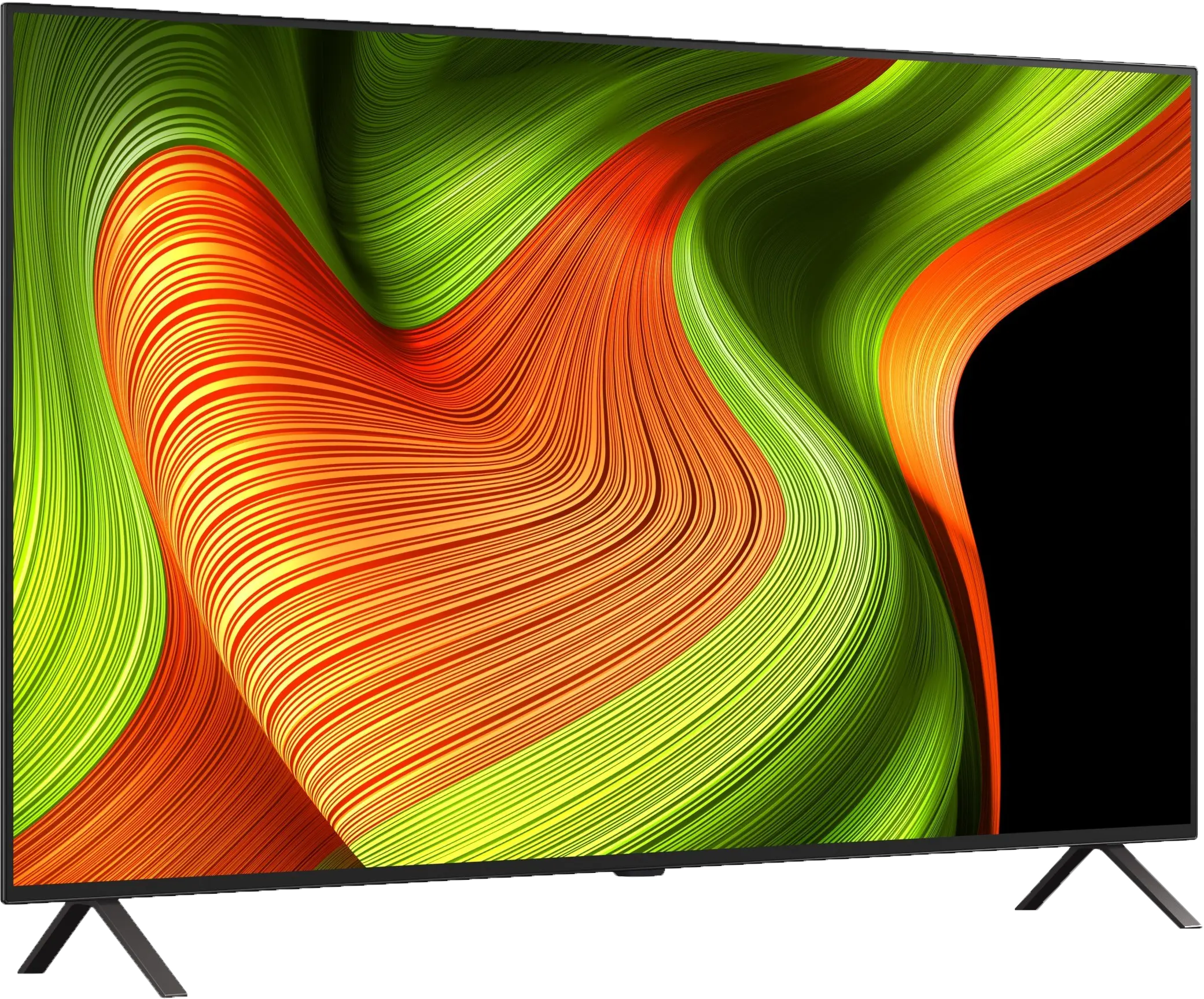
Panel type: WRGB OLED
Resolution: 3840x2160
System: Google TV
Model year: 2024
Complete the survey to find out the result

Panel type: WRGB OLED
Resolution: 3840x2160
System: WebOS
Model year: 2025
Complete the survey to find out the result

Overall rating
7.6
7.8
Movies and series in UHD quality
7.3
7.9
Classic TV, YouTube
7.8
8.6
Sports broadcasts (TV and apps)
8.2
8.5
Gaming on console
9.2
9.2
TV as a computer monitor
6.4
7.6
Watching in bright light
5.5
4.9
Utility functions
7.8
8.3
Apps
9.6
8.7
Sound quality
7.1
7.0
Complete the survey to find out what fits your preferences
Advantages
Advanced Google TV system with good app support
Very good cooperation with the console
Good image fluidity, and an advanced system for its improvement
Multicoloured Ambilight backlighting
Perfect black and contrast
Pleasant image in HDR format
Excellent colour reproduction capabilities
120Hz OLED panel - great motion fluidity
4 HDMI 2.1 ports and full support for gamers (VRR, ALLM, Dolby Vision Gaming, HGiG)
Very low input lag
Correct content scaling and good digital processing
User-friendly webOS system with a Magic remote
Built-in USB recording function from built-in DVB-T/T2 tuners
Disadvantages
Poor factory colour rendering (can be fixed through calibration)
Strongly contrasting tonal transitions
Average readability of fonts when connected to a computer
Average brightness and poor performance in bright rooms
No support for DTS formats
Different remote versions in derivative models – difficult to predict which version we will receive
Our verdict
LG B5 is really a good OLED television, which shows that you don't have to spend a fortune for very good quality. It offers deep blacks typical of organic panels, very good colour reproduction – especially after calibration – and enjoyable HDR movie watching experiences. All of this means that evening screenings can provide cinema-like emotions even without resorting to much more expensive screens. The smoothness of the picture and the set of features for gamers also deserve recognition. A 120 Hz panel, low input lag, full support for HDMI 2.1, variable refresh rates, and Dolby Vision Gaming mode make the B5 a very versatile screen – both for gaming and watching sports. The friendly webOS system with a Magic remote adds to the package, providing convenient access to content and simplifying operation. However, not everything is perfect. Compared to the B4 model, a slight drop in brightness can be noticeable, especially in very bright rooms. For some users, the lack of DTS audio support may also be a problem, which could force some workarounds when connecting Blu-ray players. Despite this, LG B5 remains one of the most sensible choices for those who want to enter the world of true cinema – without overspending, but also without major compromises. It's a screen that doesn’t need to prove anything – it simply delights the eye with excellent picture quality and works as it should.
TV appearance



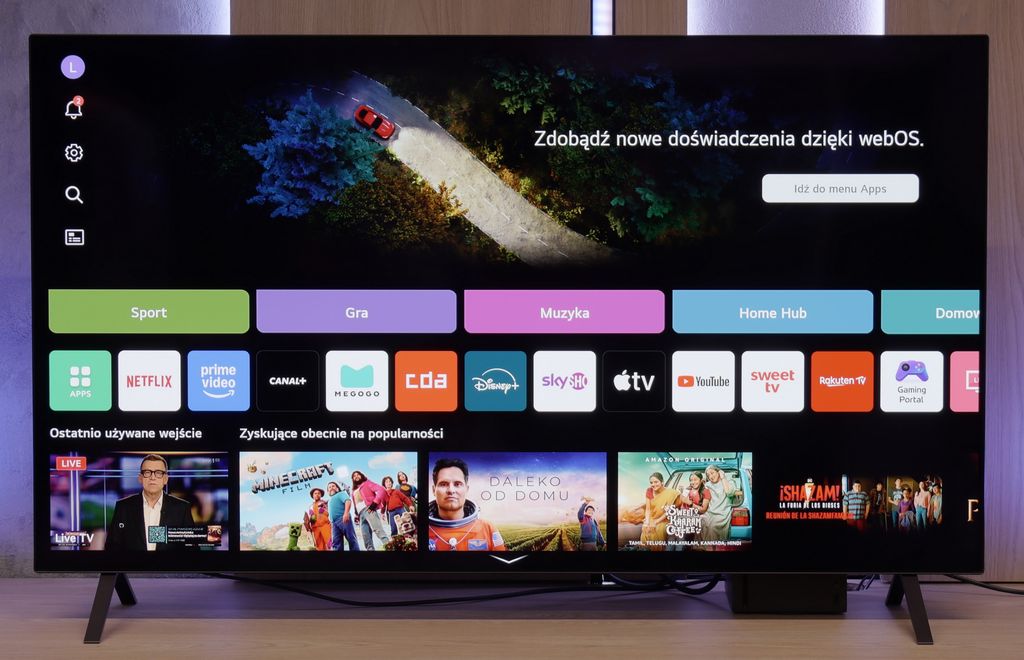
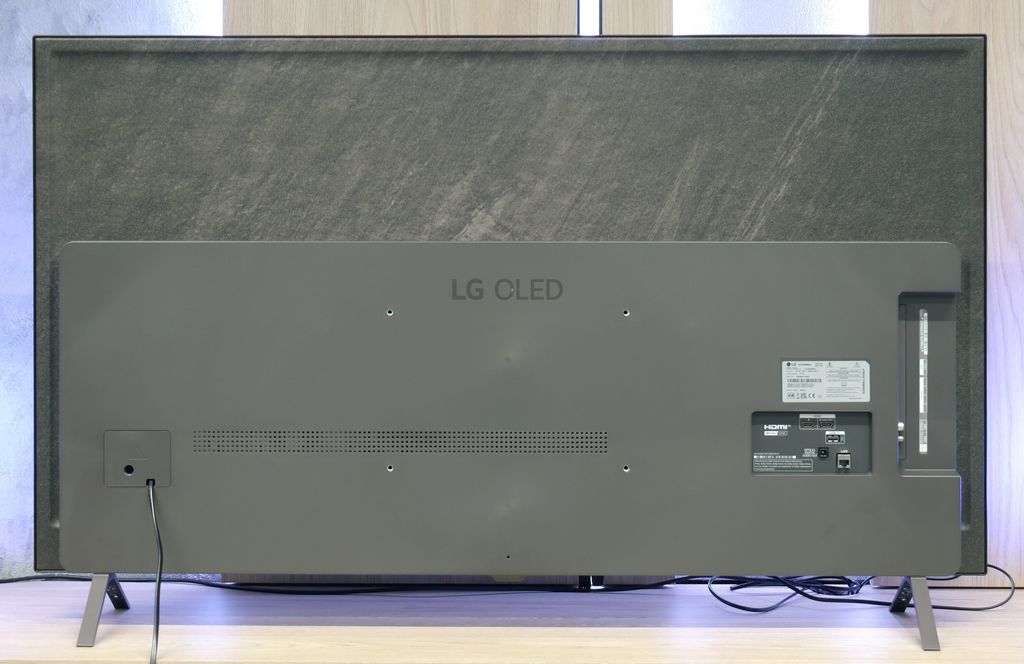

Contrast and black detail
10/10
10/10
Contrast:

Result
∞:1

Result
∞:1

Result
∞:1

Result
∞:1

Result
∞:1

Result
∞:1

Result
∞:1

Result
∞:1

Result
∞:1

Result
∞:1
Halo effect and black detail visibility:


Philips OLED 809, as the name suggests, uses an organic matrix. Like the vast majority of manufacturers, it comes from the LG Displays factory, which is not surprising, as other leading manufacturers like Sony and Panasonic also use them. The application of this type of panel allows for achieving an ideal result in the contrast and black testing procedure. Thanks to such results, the image is incredibly vivid and free of any blooming effect from bright text on a dark background, which is already an indispensable element of televisions with local dimming. This is made possible by the very construction of the panel, which is not made up of many layers of filters, but from conductive organic polymers, controlled by electrical impulses. Thus, if we want to achieve black, the pixel dims to a value of 0, rather than being obscured. The lights present in the test image are perfectly separated from each other, which is extremely difficult, and often impossible, for LCD televisions. One of the strongest advantages of Philips OLED 809 is its ability to render contrasts. The Philips OLED809 test showed that the television excels at separating bright elements, such as headlights, from dark backgrounds.
If you are looking for changes compared to last year's LG B4, we will immediately dispel any doubts – you won't find any in this category at all. And that's good. Because how to improve something that is already bordering on perfection? The LG B5, as a television with an organic WOLED panel, offers black as tar scenes and a contrast that is hard to find even in the most expensive LCD screens. The display is as clear as a bell – no bleed-through, no streaks, no halo effects that can ruin the atmosphere in cinema scenes. Here, everything is in its place. Details separate from the black with surgical precision, nothing blends together, even in the most demanding sequences from films such as The Revenant or Oblivion. This is the type of television that can enchant you, especially when the room goes completely dark. When the lights go out, the LG B5 takes centre stage – and it does so spectacularly. In these conditions, OLED shines the brightest, and even top LCD models – despite advanced dimming and hundreds of zones – simply fall behind.
HDR effect quality
6.8/10
6.2/10
Luminance measurements in HDR:

Result
921 nit

Result
970 nit

Result
1039 nit

Result
1022 nit

Result
425 nit

Result
587 nit

Result
593 nit

Result
628 nit

Result
589 nit

Result
470 nit
Scene from the movie “Pan” (about 2800 nits)


Scene from the movie “Billy Lynn” (about 1100 nits)


Static HDR10


Dynamic: Dolby Vision
Dynamic: Dolby Vision


HDR luminance chart:
LG OLED B5
Luminancja HDR
Luminance of RGB colors
Philips OLED809/819
Luminancja HDR
Luminance of RGB colors
Philips OLED 809 delivers a more than satisfying HDR effect. The television is capable of generating brightness exceeding 900 nits in almost every scene, and sometimes even over 1000. This result allows for a full experience of content with a wide tonal range. The only moment when Philips OLED 809 is unable to generate higher brightness is in a scene from the movie “The Meg,” which features a large amount of bright white across a significant portion of the screen. However, this cannot be regarded as a poor result, as it represents a considerable improvement over its predecessor. Generally speaking, such values for OLED panels produced by LG Display, which do not feature MLA technology, are very, very good. When combined with high coverage of the DCI-P3 colour gamut, they allow for an exceptional HDR experience. The Philips OLED 809 test showed that this television supports popular HDR formats such as Dolby Vision and HDR10+.
The LG B5 is a moderately bright OLED television. Regardless of the scene, it can generate around 500 nits of peak brightness. Interestingly, it achieves this even in full-screen shots saturated with white, where most OLEDs typically struggle. So is this screen suitable for HDR films? Indeed – and very much so, because such brightness allows you to truly feel the magic of HDR effects. However, it is worth noting that compared to last year's B4 model, the new B5 is darker – by about 100 nits. It may seem like a small amount, but at such average peak values, it makes quite a significant difference. Fortunately, the television compensates with another advantage – excellent coverage of the DCI-P3 and BT.2020 colour gamut. As a result, HDR films look really colourful, vibrant, and impress even in more demanding scenes.
Factory color reproduction
5.1/10
8.2/10


Factory Mode
After calibration


Factory Mode
After calibration
The best factory mode in which we conducted all our tests was "Filmmaker", which has become rather standard in televisions from this manufacturer. However, let's check what its characteristics were before we began the calibration process. The first aspect we will examine is white balance, as despite appearing unassuming, it determines whether the image will be free from any kind of tint. The graph clearly shows that both in SDR and HDR materials, there was a dominant presence of two colours: red and green, which resulted in a strong yellow tint that was ubiquitous across the entire image. This is perfectly visible on the "ColourChecker" palette, where all hues shifted towards their warmer counterparts. The second thing we will scrutinise is, in our opinion, the two most important graphs regarding image quality assessment: gamma and the EOTF curve. Both aim to maintain adequate brightness and contrast. The first one serves to describe the brightness level in SDR materials, while the second shows the rate of luminance increase. Analyzing the first one, we can observe that it was extremely lowered compared to the reference value marked by the orange line. This situation resulted primarily in a sharp increase in brightness and a significant reduction in contrast, almost reminiscent of that in OLED televisions. The EOTF curve exhibited greater "moderation" and only slightly brightened the entire image to 50% of the maximum brightness.
We tested the B5 in Filmmaker mode and... we would love to see more TVs like this straight out of the box. Truly. The white balance is set very well – there's practically nothing to complain about. Well, if one were to nitpick, one might notice a slight deficiency in blue, which makes the overall image seem slightly yellowish. But that’s just our editorial quibbling. Most of you probably wouldn’t even notice it. We also have minimal reservations about brightness management in HDR format. The EOTF curve – which is responsible for how the TV distributes brightness in a scene – is slightly below ideal. In practice, it may happen that the darkest parts of the image are displayed too dark and simply… disappear. But these are details that only come out in measurements. Generally: we are impressed. However, we also know that LG TVs respond very well to professional calibration. You can achieve almost reference-quality picture from them, so – while it's already very good out of the box – we allowed ourselves to go a step further and refine everything to perfection.
Color reproduction after calibration
9/10
9.1/10

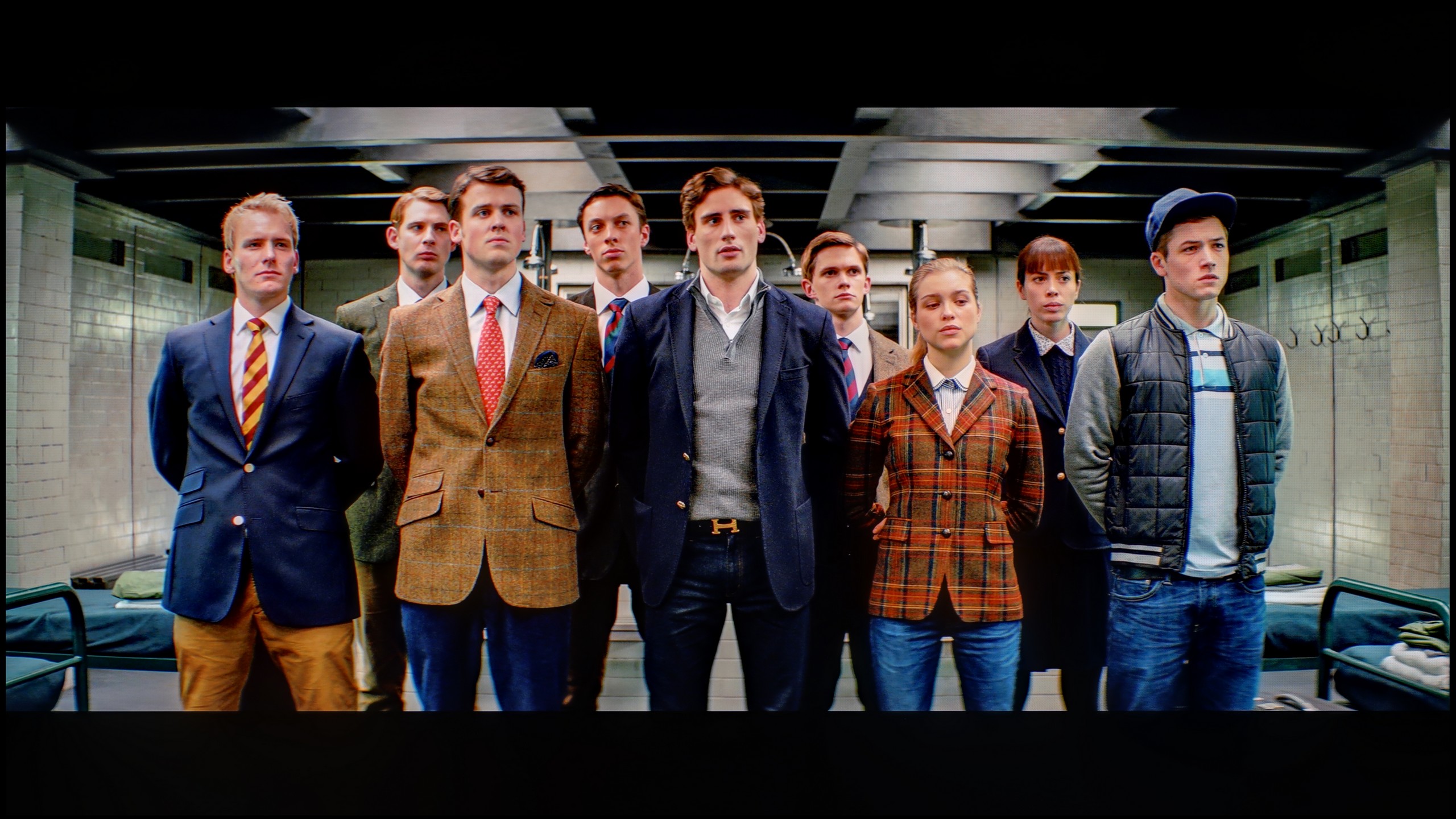

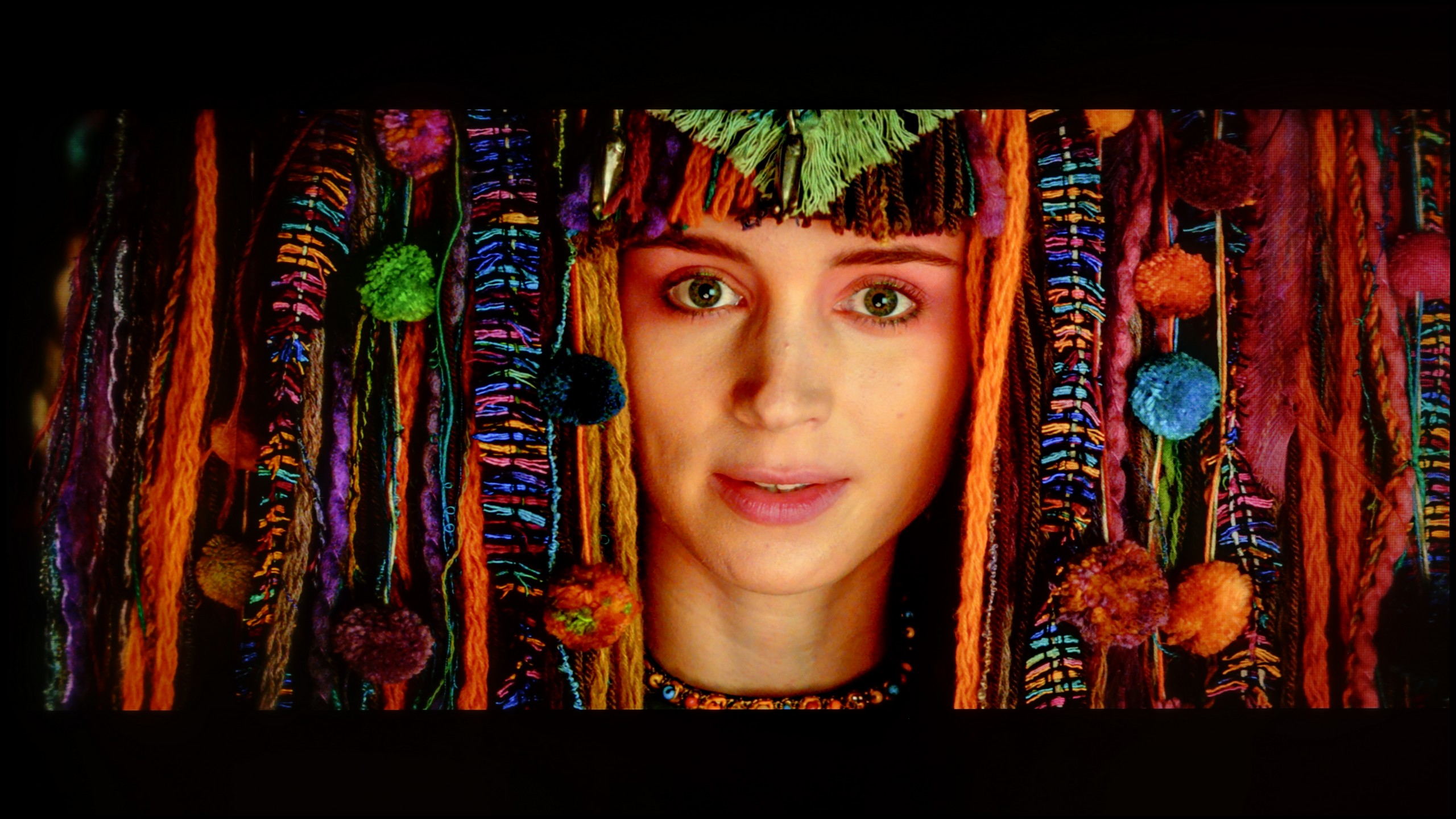
Philips, like most leading manufacturers, has been providing advanced tools for calibration processes for years. Here we will find both 2- and 20-point grey scale adjustments, as well as an advanced CMS (Colour Management System). As you can observe, this has brought about extremely beneficial results and profoundly changed the perceived image. Practically every one of the elements mentioned above has undergone a transformation and has been brought back to its natural state. This is particularly evident on the "ColourChecker" palette, where the measured samples are harmoniously in place. It must be said that the white balance has turned out exceptionally well, allowing us to enjoy a clean image free from any tint in both SDR and HDR materials. The biggest issue of OLED809, namely gamma, has been properly modelled and only shows minor errors here and there, which will not affect the overall picture. The EOTF curve, on the other hand, has been rid of that subtle brightening and now presents itself as reference-level.
We must admit that we didn't have much work with the LG B5. It's one of those televisions that look good right from the start, but after calibration… they can really impress. The white balance was brought to almost perfect levels – to the point of errors that are invisible to the human eye, unless you are a professional colourist with a magnifying glass at the screen. We also managed to master the tendency of the television to slightly dim the darkest details, particularly in HDR scenes. After proper tuning, everything looks cohesive: black remains deep but does not consume information. Highlights maintain their natural sparkle, and colours align with the director's vision. This is truly one of those models that shows you don't have to spend a fortune to have an almost reference-quality picture. If you can opt for professional calibration – it’s definitely worth it in the case of the B5.
Smoothness of tonal transitions
2.4/10
7.2/10





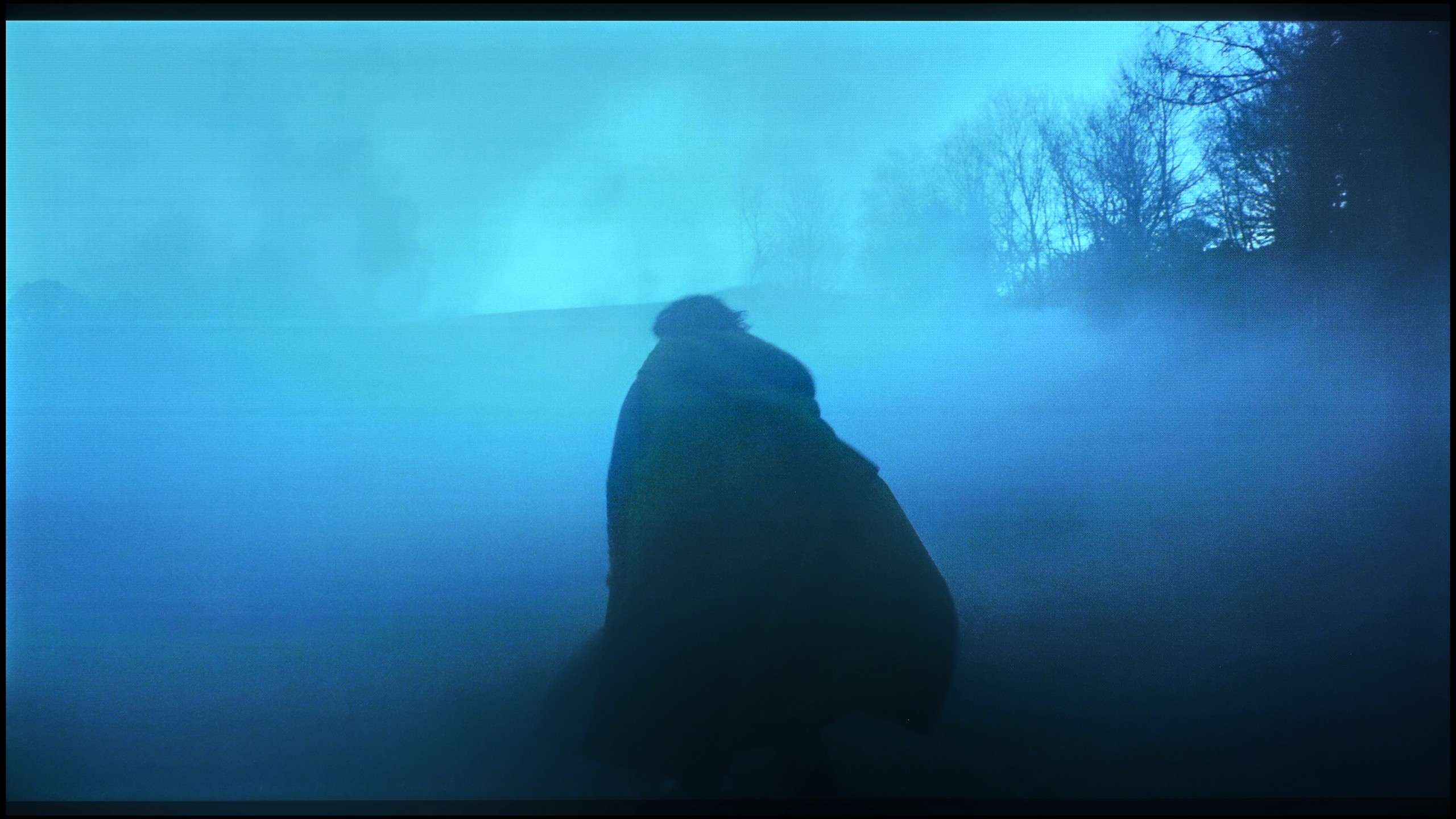

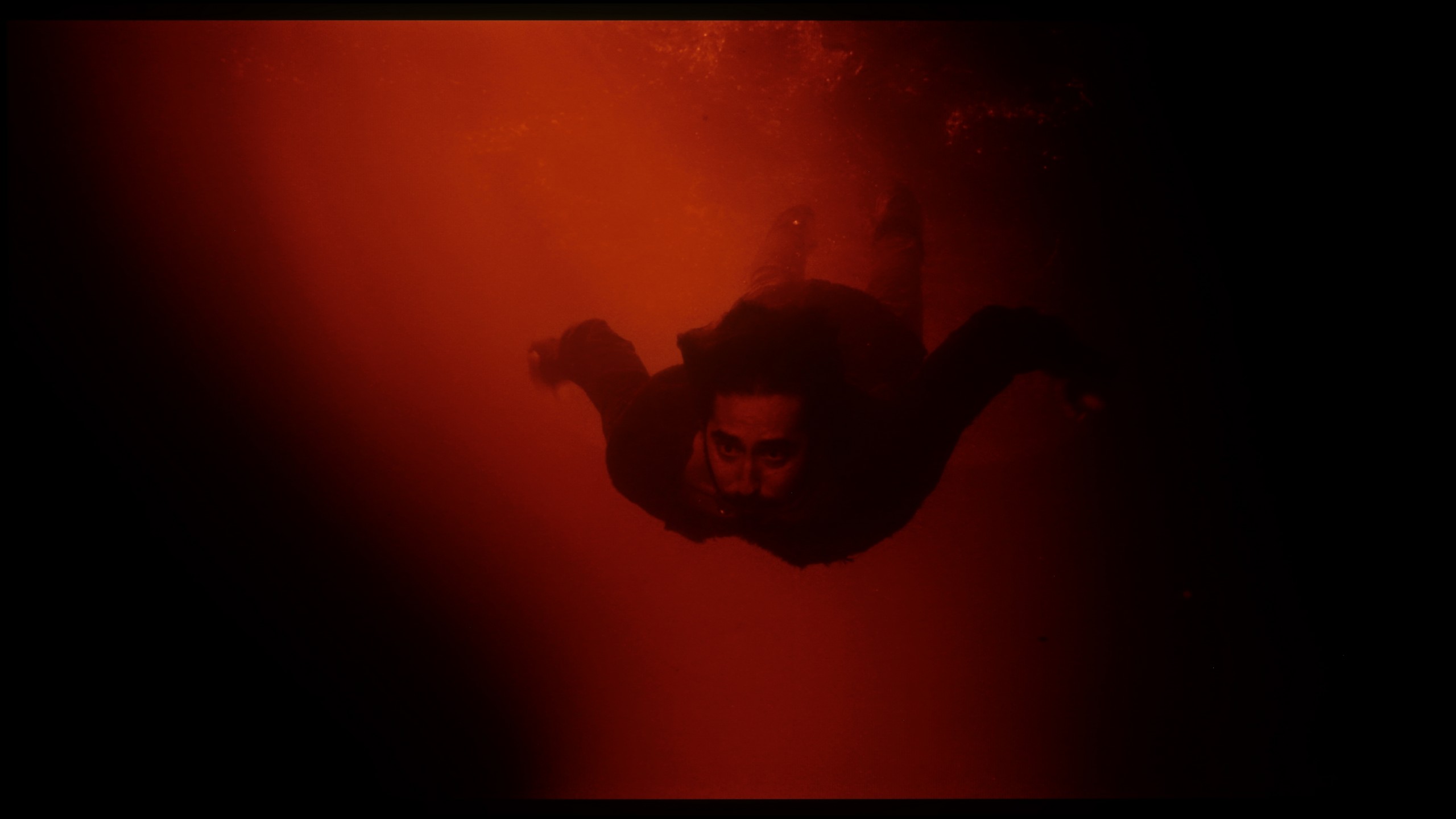




Equally important as colours, blackness and contrast in the context of the image quality assessment process is its purity. This category can also include the quality of tonal transitions. How many of you have experienced the effect of "banding" of colours on your older receivers? It is extremely bothersome and often effectively hinders immersion in the series or film being watched. Philips OLED 809 unfortunately has one of those qualities that are better left unspoken. However, out of editorial duty, we should take a look at them and evaluate, which will be quite simple given their lack of complexity. As you can see, practically every scene demonstrated a lack of fluidity between colours. And just as in the film "Kingsman" this is still acceptable, in other productions it is really impossible to leave them with a clean conscience, especially when looking at "The Green Knight." There, the dense fog has practically been converted into horizontal stripes and vaguely defined geometric shapes. There are televisions that can manage tonal transitions perfectly, but Philips OLED 809 unfortunately does not belong to this group. During the tests, we could observe the colour banding effect, particularly in demanding scenes, which negatively impacts the reception of the film. Philips OLED 809 test indicates that even options for removing posterization do not help sufficiently, which can be considered a serious flaw.
The LG B5 handles colour gradation quite decently. In bright scenes, where we have smooth transitions between skin tones, the sky, or backgrounds, the television blends colours seamlessly and without any jarring effects. At first glance – it looks good, especially considering the price. However, it is enough to reach for more challenging material – those darker, more demanding scenes with a lot of subtle transitions – and the challenges begin. Minor artefacts, false contours, and slight thickening appear. It is still not a level that dazzles or distracts from the narrative, but the difference compared to more expensive WOLED models – and even more so QD-OLED screens – becomes noticeable.
Image scaling and smoothness of tonal transitions
5.5/10
7.5/10
Smooth transition function

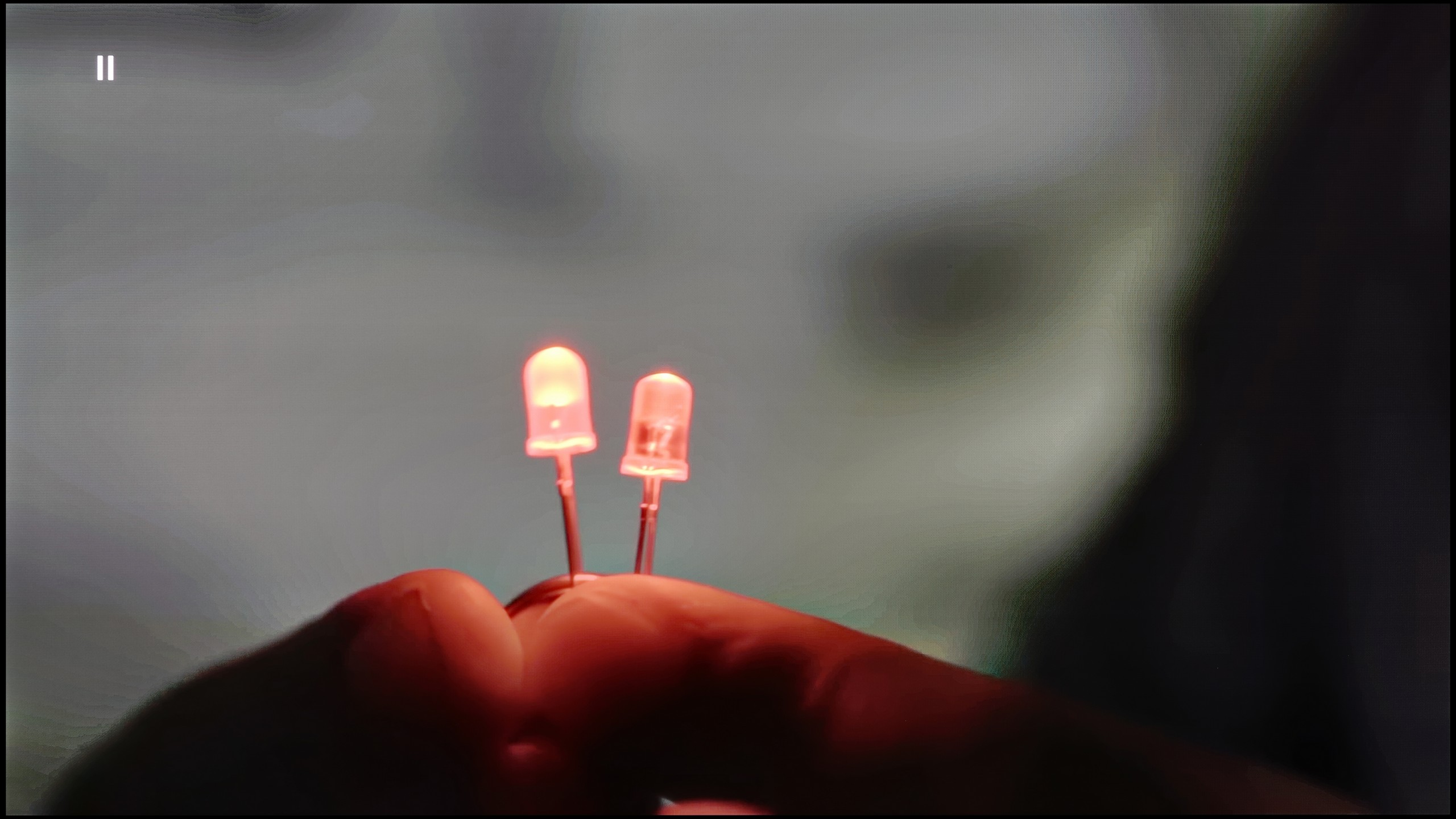
Image without overscan on the SD signal


Philips OLED 809 did not perform particularly well in the test of tonal transition fluidity. Moving on to the part of the test where we assess the behaviour of the television's algorithms, we will once again check the function responsible for removing posterization. Indeed, such a function exists in the menu and has several available options. As you can see in the picture on the left, although its presence has been confirmed by us, it is not useful. Only at the highest setting does it effectively remove stuttering; however, it blurs the entire image in the process. Therefore, it is completely useless.
It happens more than once or twice that you and we watch lower quality materials. In this case, the quality of the image upscaling algorithms can have a beneficial effect. We must admit that those implemented in OLED 809 work quite efficiently and improve image quality without visible artifacts. You can only notice slight edge fringing; however, it is unlikely to be visible during normal viewing.
LG B5 really positively surprised us in terms of handling lower quality content. Thanks to the enhancement and smoothing features, materials in HD resolution or even SD gain a second life. Importantly – when this option is activated at the "low" or "medium" level, we do not feel that the image is artificially softened or smoothed out unnecessarily. Details remain intact, film grain does not disappear, and the edges of objects do not look washed out 😉. This is truly a useful tool – especially if you are watching terrestrial television, archival materials, or content from YouTube in lower resolutions. The image is clear, coherent, and simply pleasant to the eye.
Scaling as such works very well – even content of poor quality is reproduced with surprising fidelity. Unfortunately, there was a slight hiccup. Although the menu contains the option to disable overscan, the television still has issues with correctly displaying images of very low resolution. It may seem like a detail, but when watching older materials – it can be irritating.
Blur and motion smoothness
8.5/10
8.5/10

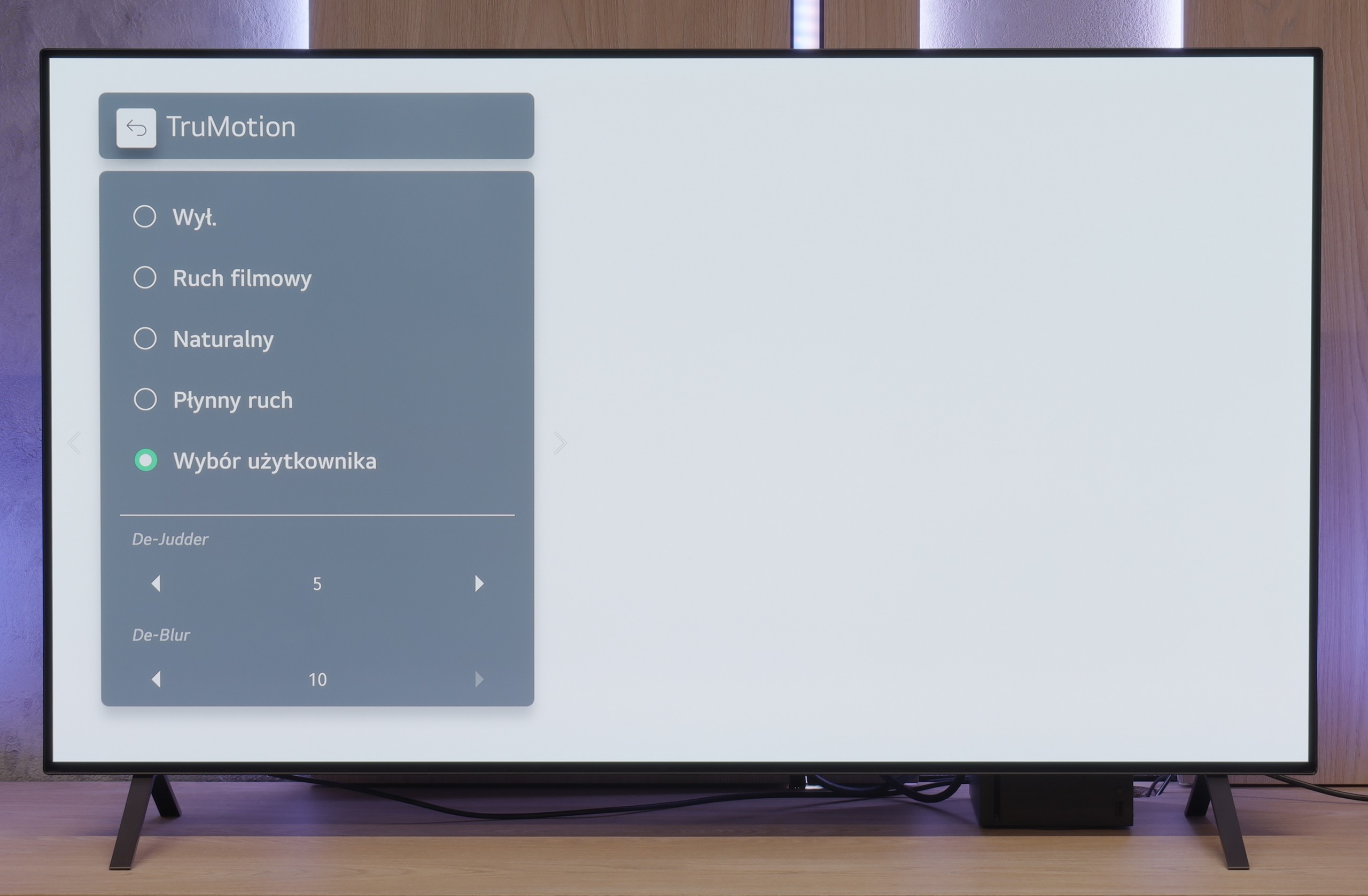
Blur (native resolution, maximum refresh rate):



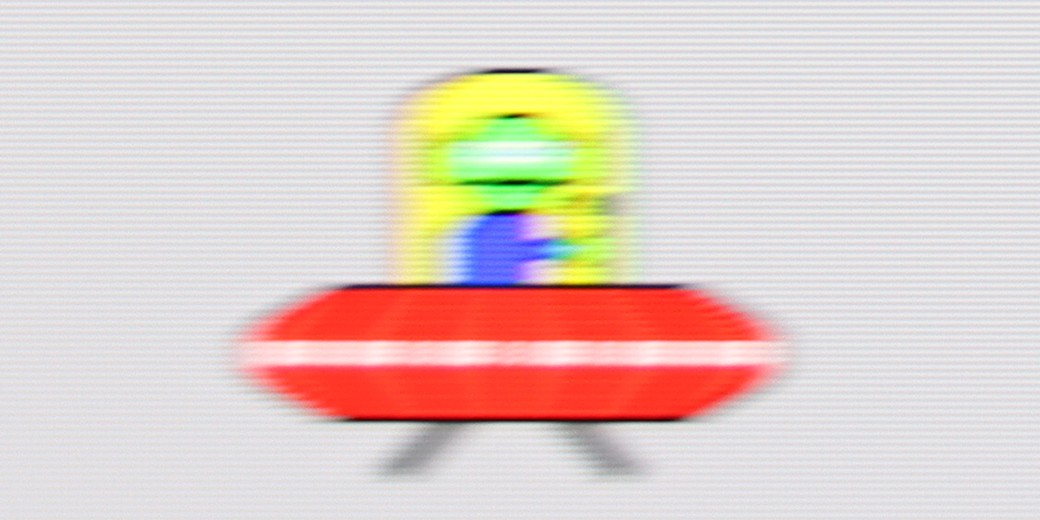
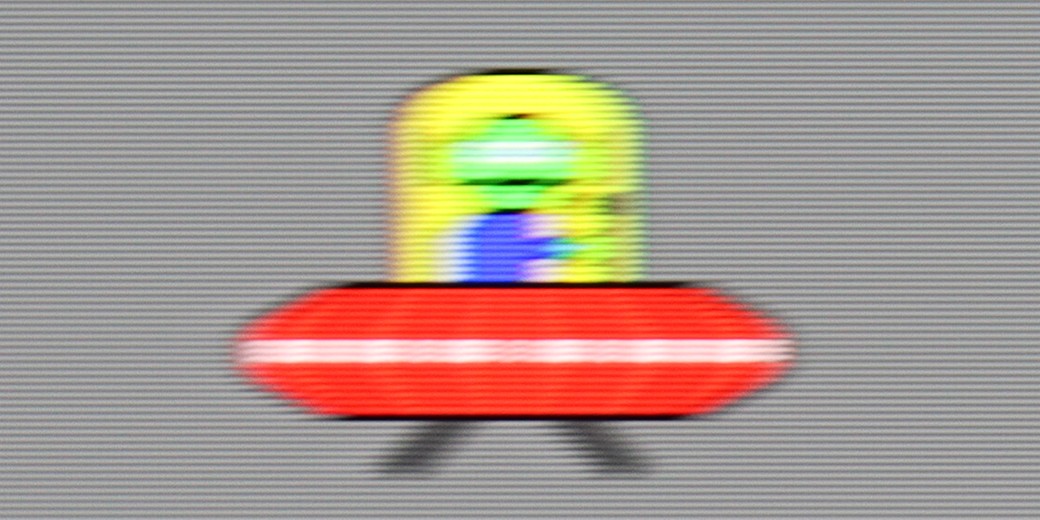
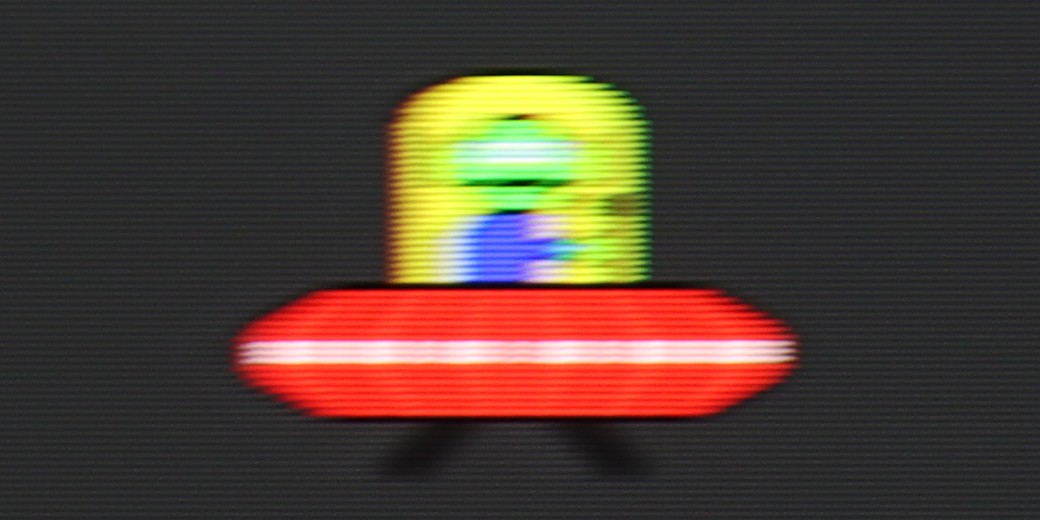
The maximum refresh rate we can set on the tested television is 144 Hz. This value can be achieved by connecting it to a really powerful PC. In the case of consoles or television, everything remains the same. For those who require high smoothness of motion or dislike the characteristic stuttering of films recorded at 24 fps, the manufacturer has prepared a fairly extensive motion smoothing system. In the dedicated tab, we will find a slider for “Smoothness” that is responsible for eliminating stutter, and “Motion Blur Reduction,” which helps increase the sharpness of dynamic elements. The function works very well and granularly, meaning that each setting has a real impact on the perception of motion. We also mention that it works at a refresh rate of 120 Hz, as it operates on multiples of film or television materials. With such an extensive set of options, every user will find their golden mean. In the picture, we present our choice, which is slight smoothing without the soap opera effect.
Motion is influenced not only by settings on the television but also by the response time of the panel itself. OLED televisions feature the best response time on the market, which in the case of 809 is about 0.1 ms. There are no IPS/ADS or especially VA panels that come close to the results of organic panels.
LG B5 is a television with a 120 Hz OLED panel. It may not sound as impressive as the marketing claims of “144 Hz” or “165 Hz” found in gaming monitors, but honestly? The smoothness is excellent nonetheless. The picture is sharp, fluid and simply enjoyable to watch – even when there is a lot happening on screen. The organic panel does its job – the pixel response time is almost instantaneous, meaning there’s no sign of smearing or blurring that can spoil dynamic shots. Sport, fast-paced games – everything looks clear and distinct.
We also have the classic LG smoothness enhancer, TruMotion. This allows you to smooth out films shot at 24 frames per second – which, to put it bluntly, is most of what you watch on Netflix or from Blu-ray discs. If you set lower values on the “De-Judder” slider, you’ll get a picture closer to a cinematic look – with a slight judder, but without any artificiality. Higher settings? A soap opera effect is guaranteed. Fortunately, LG gives you the option to tune everything to your liking.
Console compatibility and gaming features
10/10
10/10
- ALLM
- VRR
- VRR range40 - 144Hz40 - 120Hz
- Dolby Vision Game Mode
- Correct implementation of HGIG
- 1080p@120Hz
- 1440p@120Hz
- 4K@120Hz
- Game bar

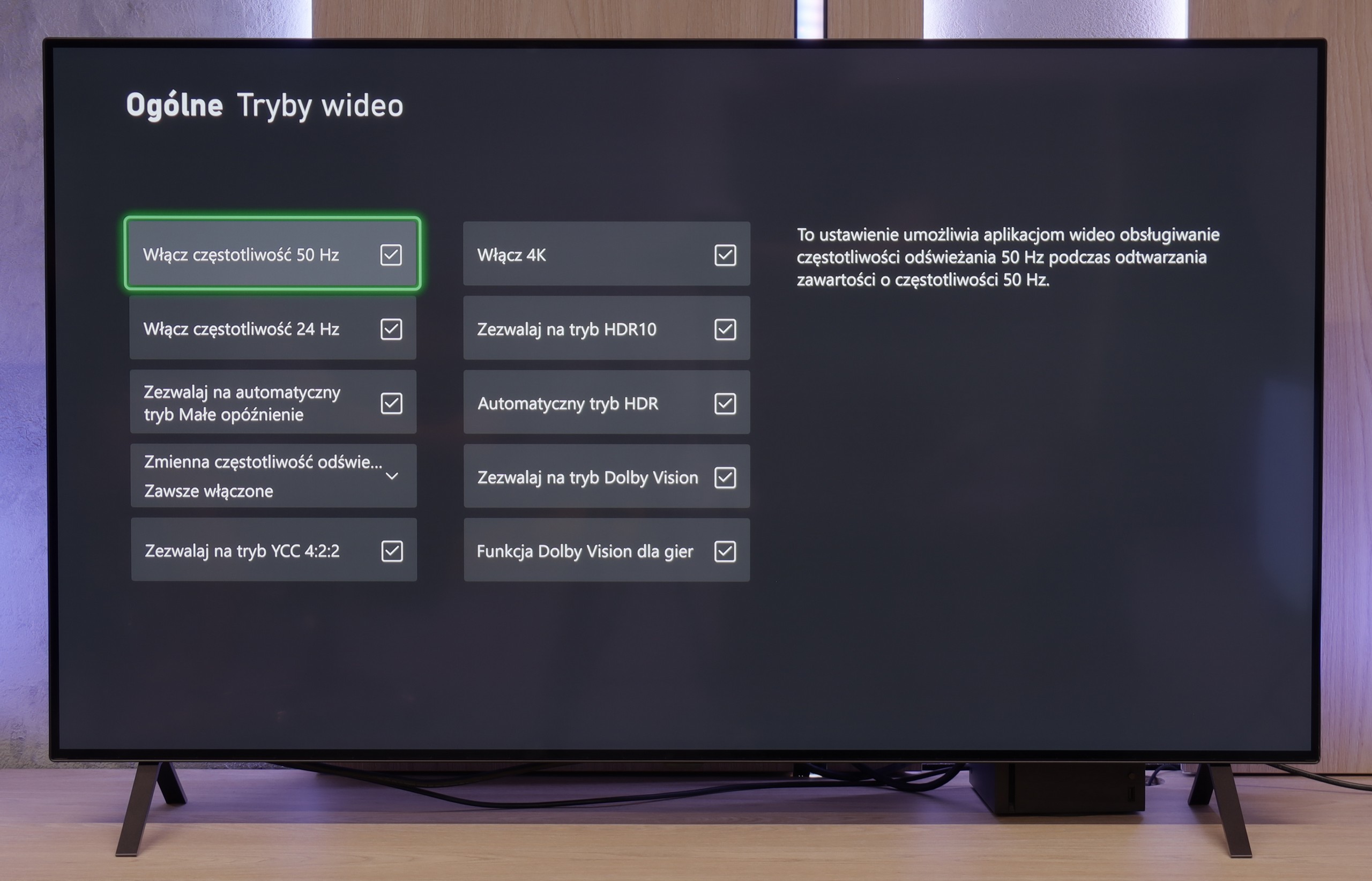

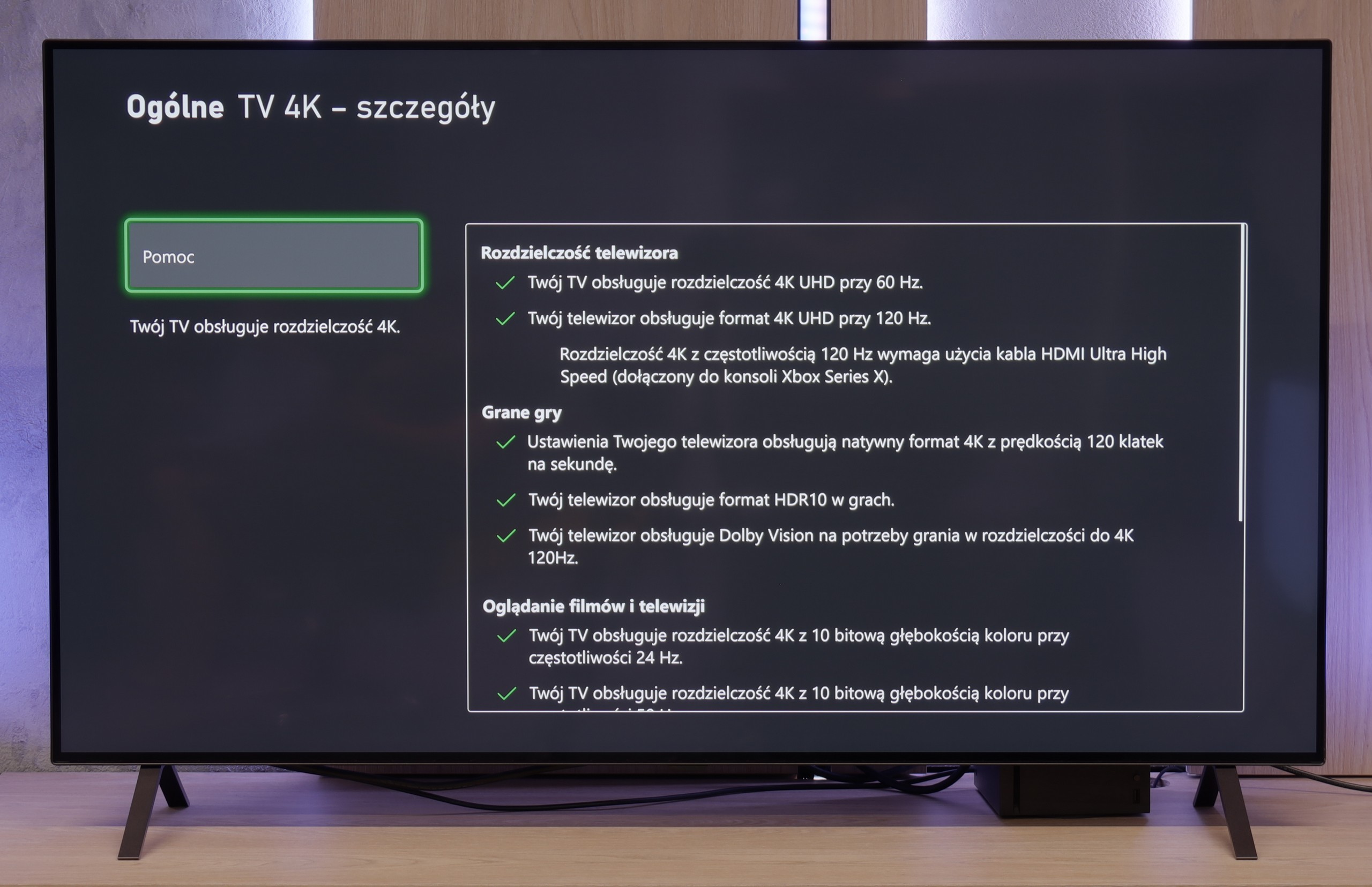

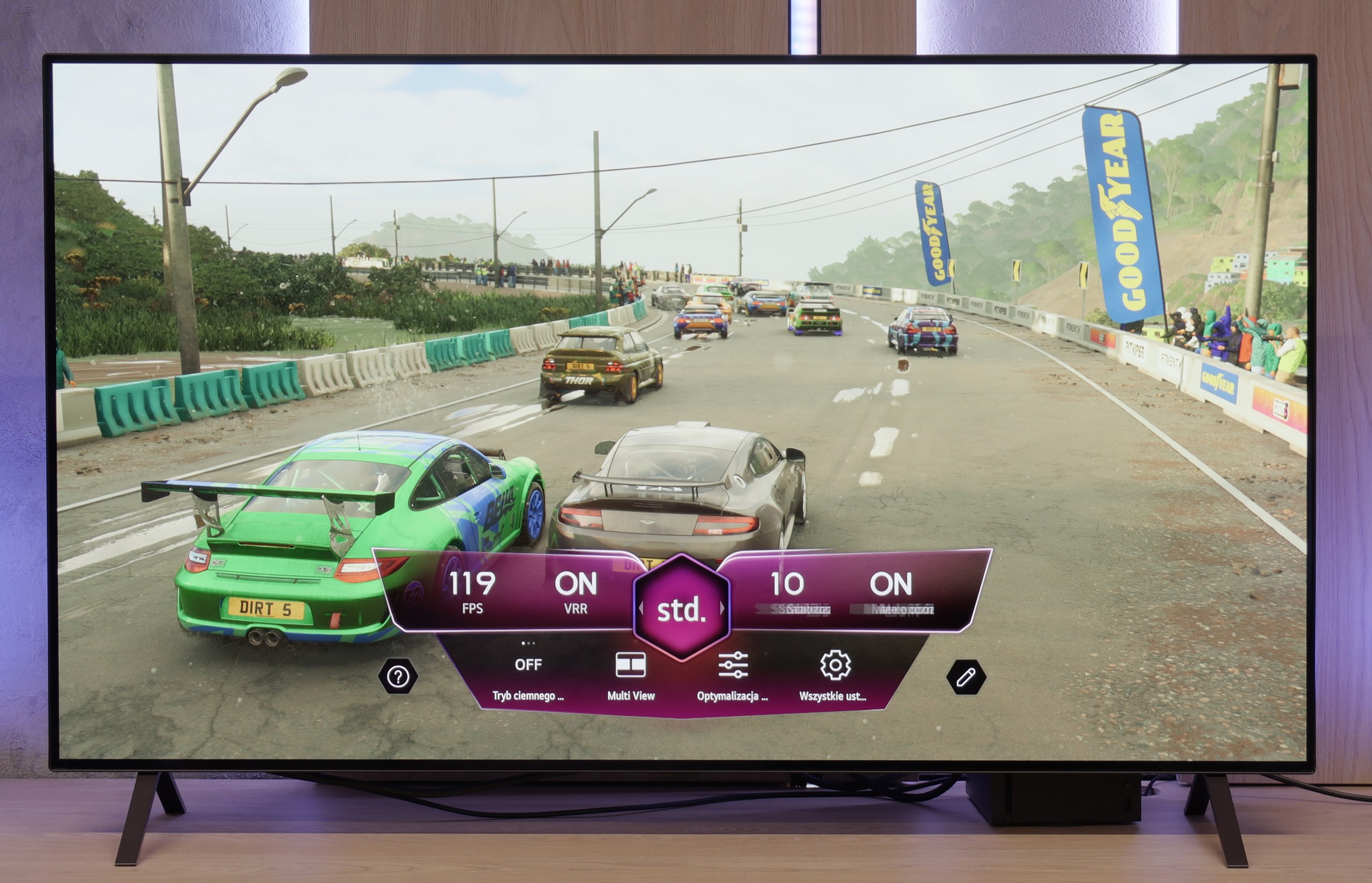

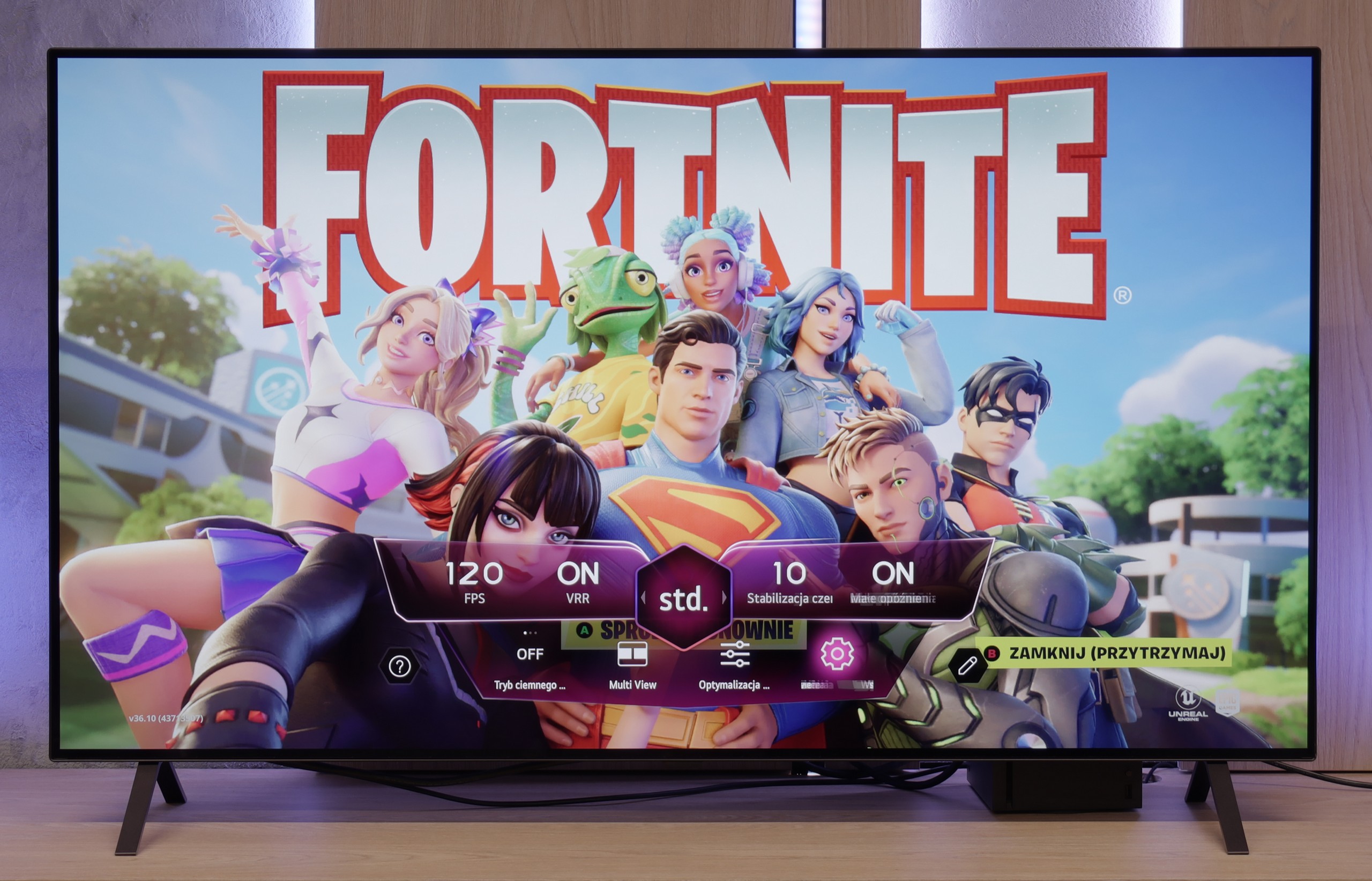
The Philips OLED 809 television supports all technologies included in the HDMI 2.1 standard, and during our testing, each one activated without any problems. Therefore, we must state that this television is perfectly suited for all gamers, whether they are using a console or a computer. It is worth mentioning that the manufacturer has opted to implement the HGIG mode, which provides a great alternative to Dolby Vision, which unfortunately in the OLED809 is unplayable due to very high input lag.
A nod to gamers is also the inclusion of a dedicated GameBar, which allows for monitoring current gameplay parameters and quick changes to settings. We will also find a function to enable a crosshair, which will be very useful when shooting with a sniper rifle, but from the so-called hip. Additionally, we can also find a shadow enhancement function for better visibility in shadows and a colour filter for gamers with visual impairments.
In summary, the OLED 809 is a very good and versatile device for gamers. Anyone who purchases this television for gaming does not need to worry about anything, as it is simply made for gaming. Especially since features such as VRR, ALLM, G-Sync, FreeSync, or HDR Dolby Vision gameplay will allow for an even greater immersion in their favourite title. Lastly, we will add that the only downside of the television in game mode is the artificial image sharpening, regardless of the settings, and it cannot be 'softened'.
There are already a few televisions on the market with the label “for gamers” that, in practice, don’t understand what that means. The LG B5 is not one of them. Everything here is spot on – there are four HDMI 2.1 ports, it has 120 Hz, VRR, and ALLM, and it even has a Game Bar that is actually useful, not just looks good in the brochure. You connect your console – it works. You set 4K at 120 Hz – it works. You have an Xbox and want to play in Dolby Vision – it works too. And this is not in the sense of “theoretically supports”; it really turns on, looks good, and you don’t need to fiddle with the settings for half an hour. Additionally, there’s the HGiG picture mode that LG implemented correctly – which means HDR in games doesn’t turn the screen into a flash lamp, but shows exactly what it should. There are no surprises here, no strange limitations, no “buts.” And you know what? That’s how it should be. Cheers to the LG B5!
Input lag
9.5/10
9.9/10
SDR
HDR
Dolby Vision
The results of input lag measurements in the Philips OLED 809 are at a high level, regardless of the signal or resolution. All gamers will certainly appreciate the manufacturer's efforts, which mean that a game running at 4K120Hz with HDR has only 5 ms of lag, which is practically unnoticeable even in online games. One should not forget the proper implementation of the gaming mode with Dolby Vision, which deserves praise for a similar reaction time of 13 ms. In this case, the Philips OLED 809 receives our highest rating.
Here we won't elaborate – the LG B5 simply has excellent input lag. For 60 Hz content, it achieves results below 10 ms, and for 120 Hz it even drops to around 5 ms. These are values that cannot be fairly critiqued. It simply works instantly, with no delays, no surprises. Well… almost. Because as usual, there is a small asterisk with the Dolby Vision Gaming mode. In this mode, the response time slightly increases. It’s nothing dramatic – they are still very low values, hardly noticeable during gameplay – but if you play exclusively competitive titles and fight for every millisecond on the XBOX, it’s worth keeping in mind.
Compatibility with PC
6.4/10
7.6/10

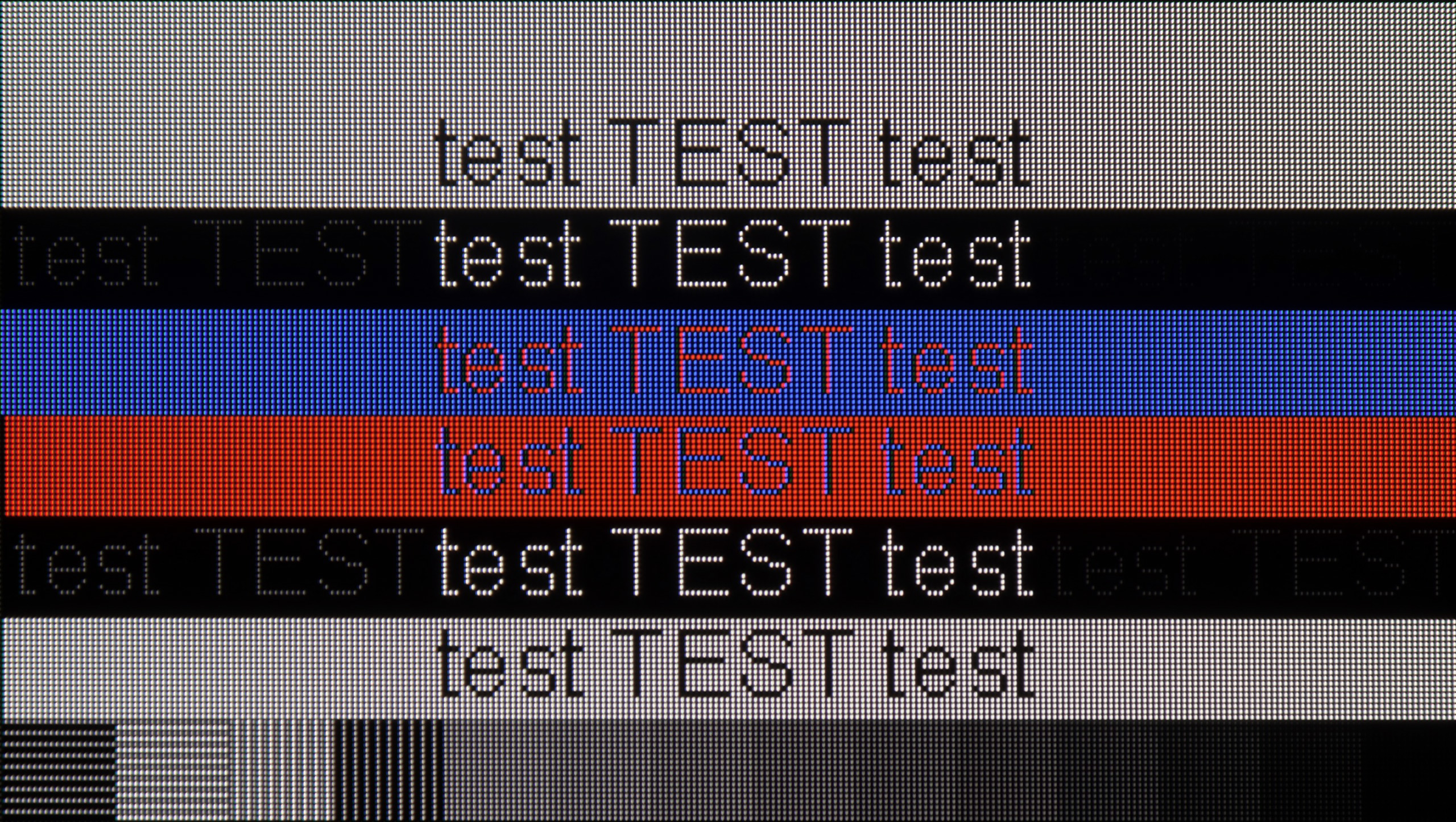
Just like in games, the tested television performs excellently, but in everyday work with text, it doesn't do so well. Although its latency is very low, the problem lies elsewhere. The television does not support chroma 4:4:4, which results in unpleasant font blurring, regardless of the provided refresh rate. While this is not usually a problem in games, it can be quite bothersome during text work due to poor readability. Additionally, the pixel arrangement in WOLED panels does not make things easier for it.
LG B5 is a television that communicates well with a computer. You won't find gaming frills like 144 or 165 Hz here, but is that really necessary for anyone? Thanks to the 120 Hz panel, low input lag, and G-Sync support, it's truly a very good screen for gaming on PC. No stuttering, no tearing, with lightning-fast response.
But it's not just for gaming. You can also quite comfortably... simply work on the B5. The television properly supports chroma 4:4:4, so fonts are readable, interfaces are clear, and your eyes won't hurt from blurred letters. This isn't a given, even among more expensive models. However, there is one 'but' – and this applies not only to the B5, but to any OLED with a WOLED panel. The RWGB subpixel arrangement can cause a slight shadow along the edges of fonts. This isn't something that stands out from the sofa. It's something that someone sitting with their nose to the screen and spending half the day in Excel would notice.
Viewing angles
7.4/10
7.4/10
A widely known advantage of OLED matrices is their performance when viewed even at sharp angles. We do not experience a drop in contrast or colour saturation. However, a characteristic feature of panels produced by LG Display, which are not used in top models, is a tint in shades of sea or cyan when viewed at large angles.
In terms of viewing angles, the LG B5 performs very well – exactly as one would expect from an WOLED panel. No matter from which side you sit, the picture maintains its quality. The colours do not wash out, the contrast does not deteriorate, and the details remain clearly visible. However, it must be said that this is not the level of Samsung Display's QD-OLEDs. Those can hold colour saturation even better at extreme angles. But if you do not plan on watching films while sitting at a 90-degree angle – the B5 is more than sufficient. It is one of those televisions that is simply pleasant to look at – from every angle.
TV efficiency during daytime
5.5/10
4.9/10

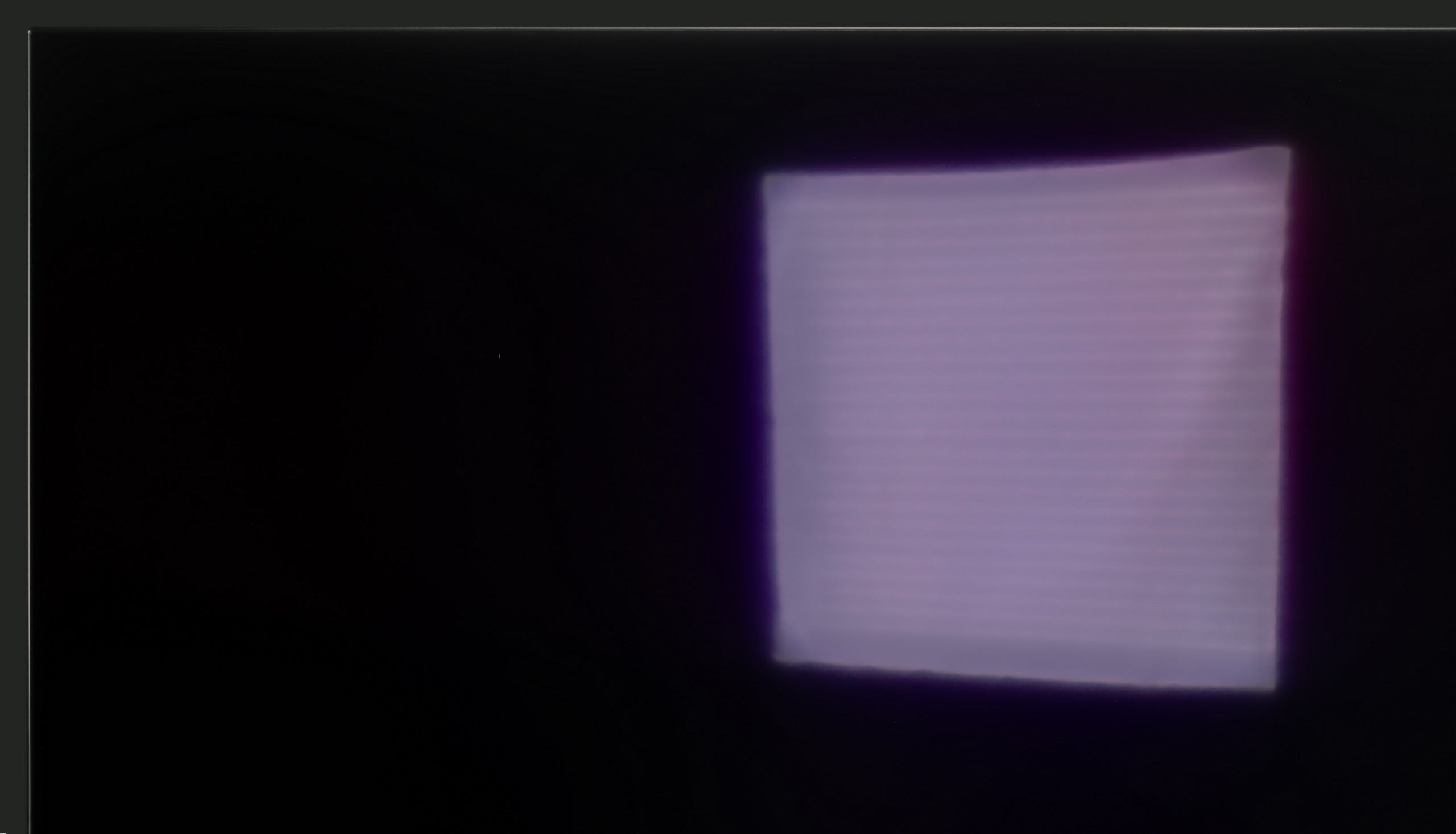

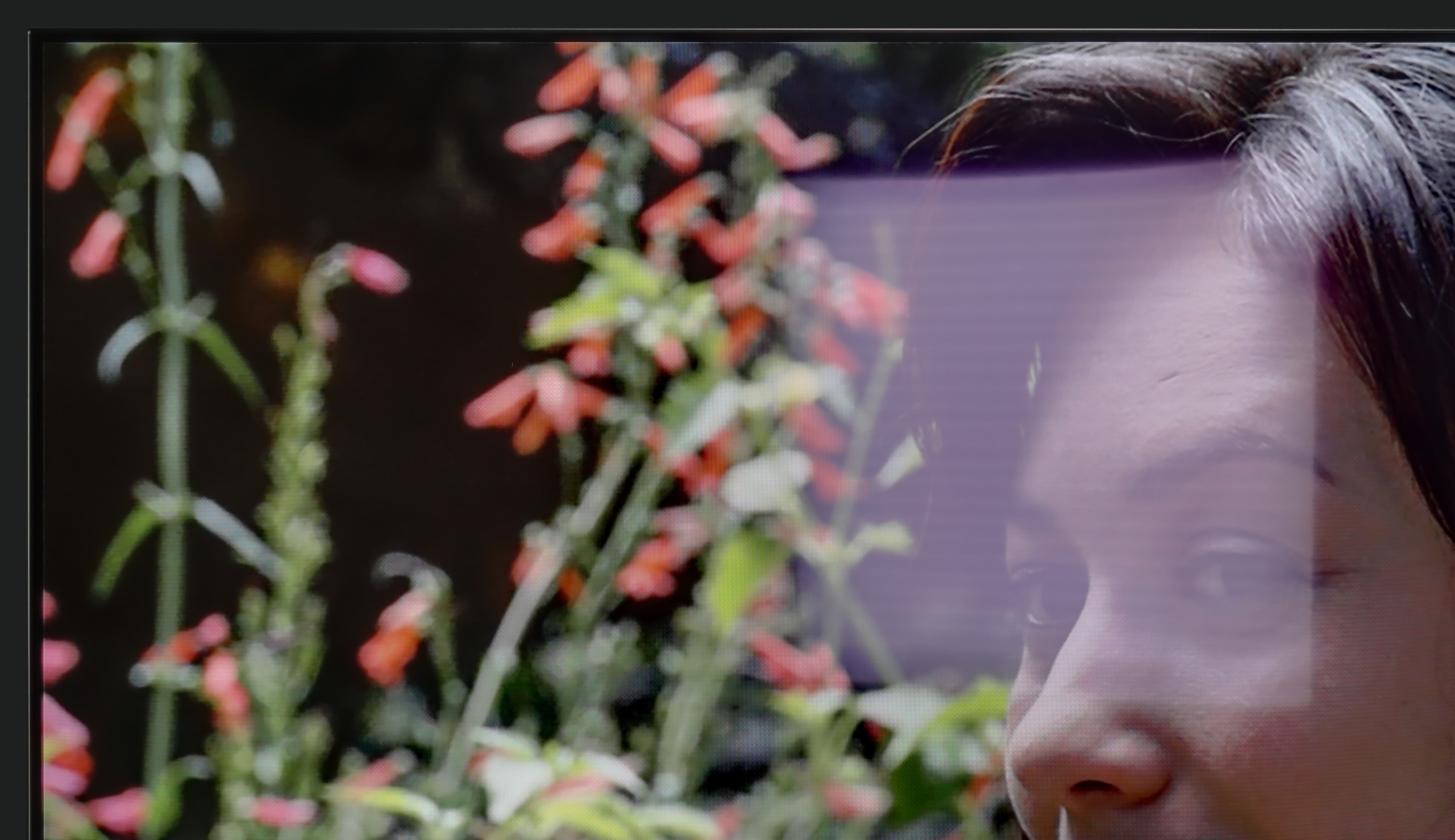
Matrix brightness
Average luminance SDR
LG OLED B5: 279 cd/m2
Philips OLED809/819: 322 cd/m2
For many years, the issue raised regarding OLED televisions has been their performance during the day. Many people still believe that these are not receivers intended for such use. They are probably right, except when it comes to screens from a few good years back. Technology advances, and currently there are no objections to recommending such a television for today. Admittedly, a glossy panel does not sound like something that would substantiate this claim; however, it is hard to stand against the images that you can see for yourselves. Another point we indicate to pay attention to is contrast during daytime use. This, unlike QD-OLED panels, and even OLEDs equipped with MLA technology, is higher. The reason for this situation is the lack of excited quantum dots and micro-lenses.
LG B5 is a television that feels best after dark. But when the sun comes out, it becomes a challenge. The brightness of this model is rather average, and the anti-reflective layer... also average. There are no special coatings here that handle reflections or very bright daylight well. So if you plan to place this television opposite a large, uncovered window – it could simply be difficult to see anything.
Fortunately, there is something worth praising: the glossy WOLED panel maintains colour saturation well. Even in difficult conditions, the image does not fade and does not become "washed out," as can happen with some models of televisions. Generally, it is watchable, but if you are looking for a television specifically "for a bright living room," then the B5 should not be your first choice.
Details about the matrix
Subpixel Structure:

Panel uniformity:
TV features
7.8/10
8.3/10
- HDMI inputs2 x HDMI 2.0, 2 x HDMI 2.1 48Gbps0 x HDMI 2.0, 4 x HDMI 2.1 48Gbps
- OutputsToslink (Optical audio), eARC (HDMI), ARC (HDMI)Toslink (Optical audio), eARC (HDMI), ARC (HDMI)
- Network InterfacesWi-Fi 2.4GHz, Wi-Fi 5GHz, Ethernet (LAN) 100MbpsWi-Fi 2.4GHz, Wi-Fi 5GHz, Ethernet (LAN) 100Mbps
- TV receptionDVB-T, DVB-T2, DVB-S, DVB-S2, DVB-CDVB-T, DVB-T2, DVB-S, DVB-S2, DVB-C
Classic features:
- Recording to USB (terrestrial TV)
- Recording programming
- Picture in Picture (PiP)
- RF remote control (no need to aim at the screen)
- Backlit remote control
- Teletext
- Audio only mode
- Possibility to connect Bluetooth headphones to the TV
- Possibility to simultaneously use Bluetooth headphones and the TV speaker
Smart features:
- AirPlay
- Screen mirroring (Windows Miracast)
- Wyszukiwanie głosowe
- Voice search in native language
- Ability to connect a keyboard and mouse



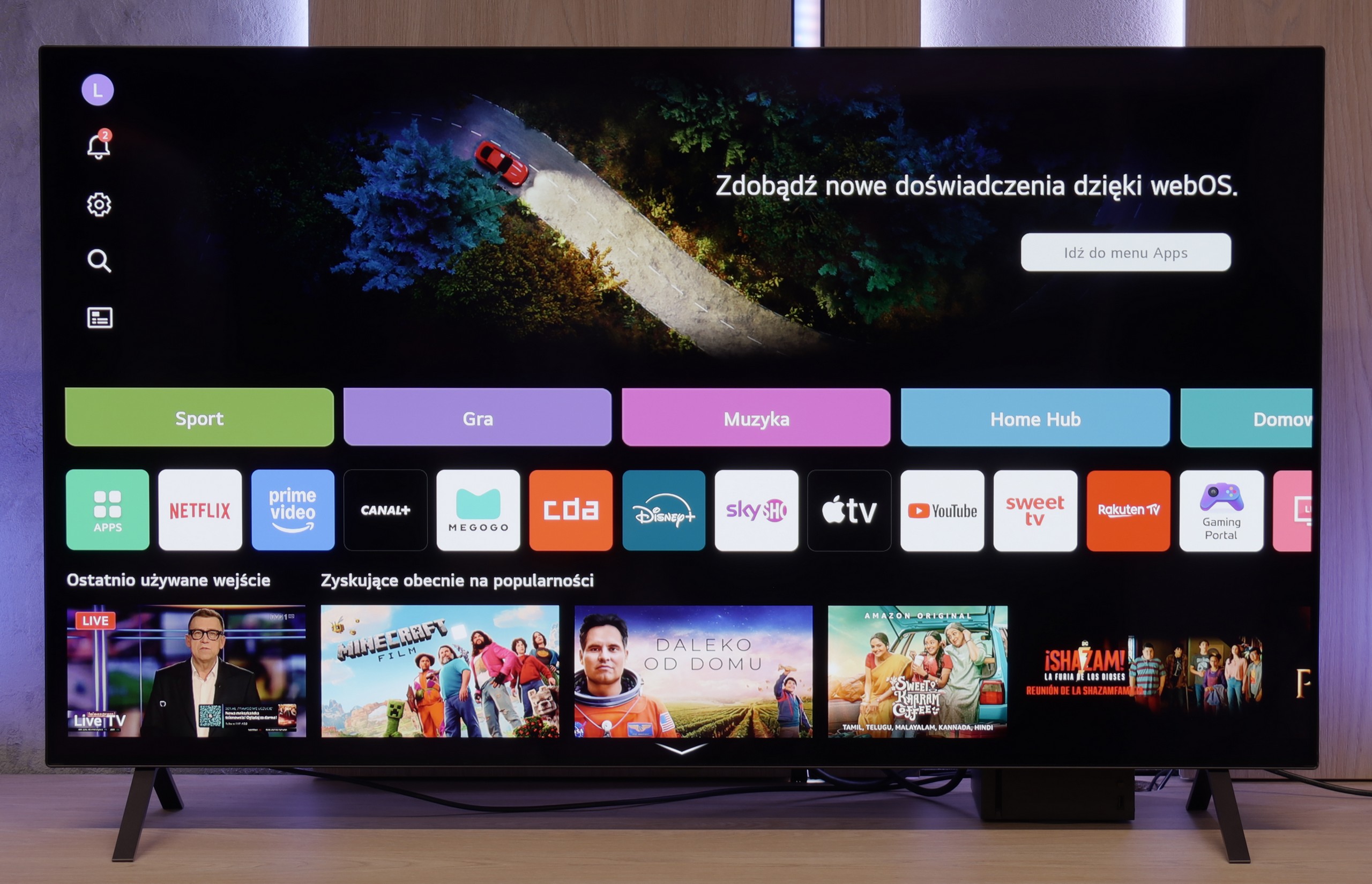
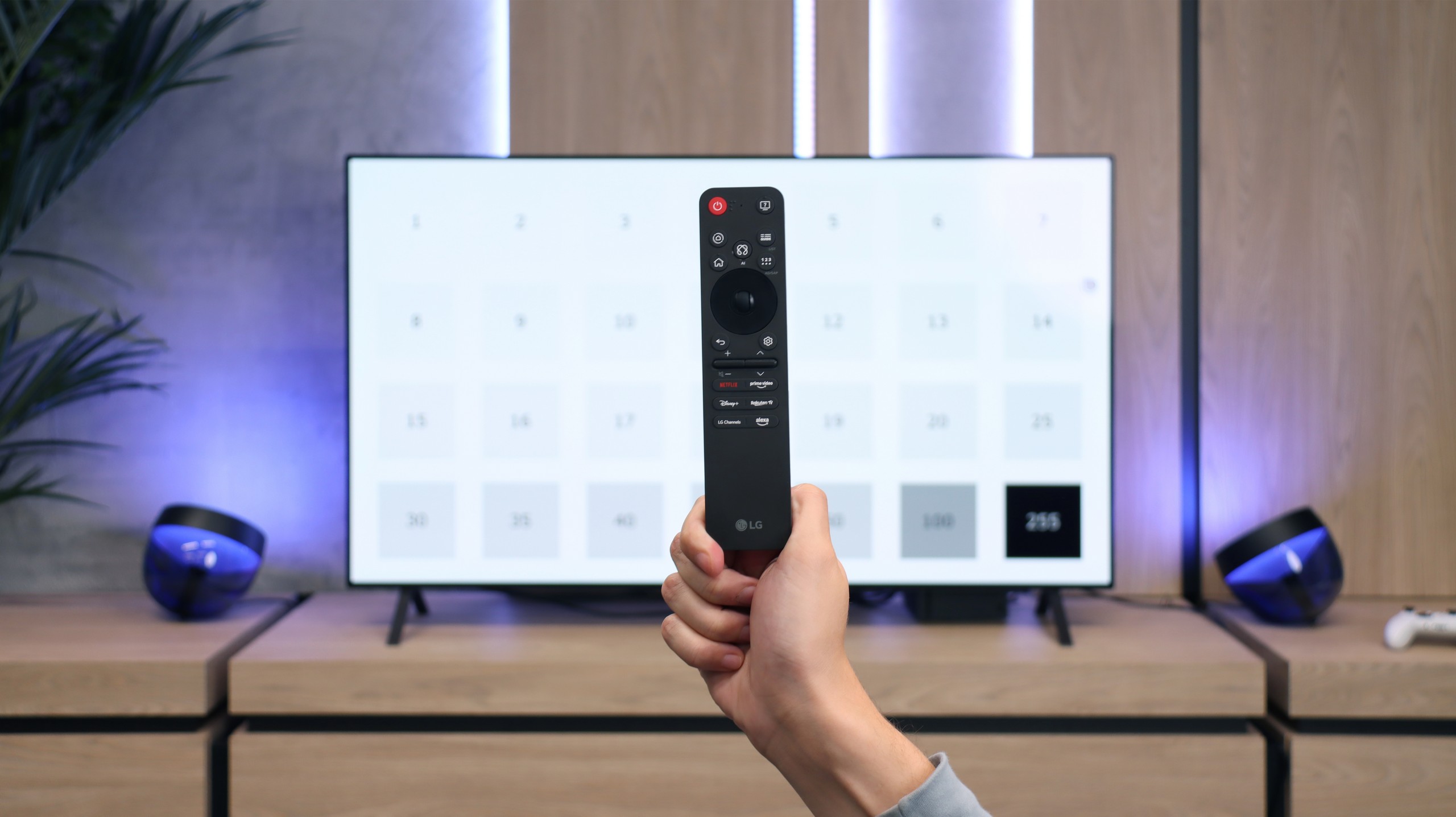
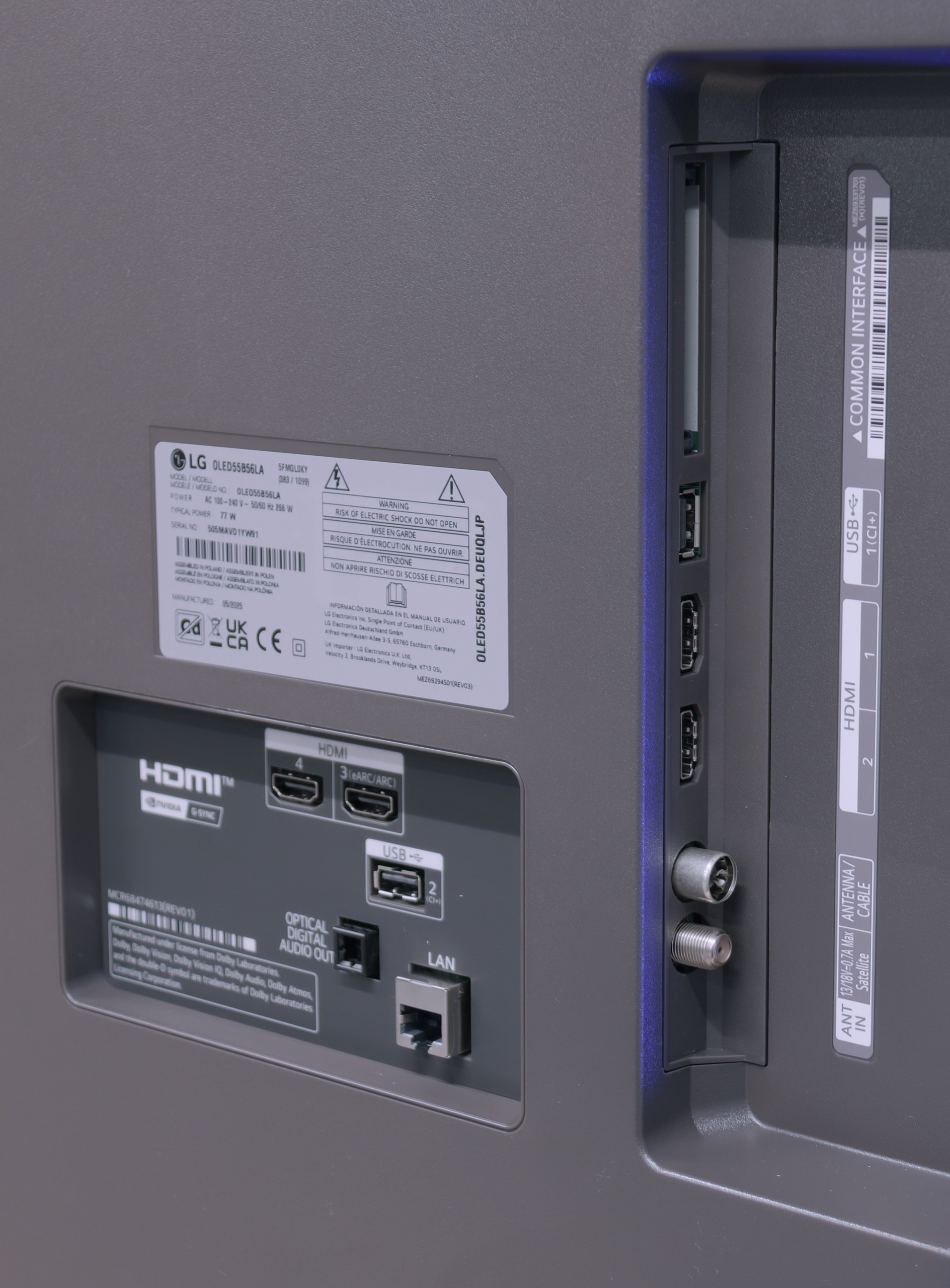
Before we move on to the software that controls the television, it is impossible not to mention the manufacturer's biggest differentiator. We are, of course, talking about the multicoloured Ambilight backlighting, which placed on the back of the device displays colours adjusted to what is happening on the screen, often allowing for an even greater immersion experience. The Philips OLED 809 is powered by the Google TV system. This is an undeniable advantage compared to some other models from the manufacturer that use the proprietary TitanOS system, which is significantly more closed and limited in terms of available applications. With Google TV, we can install almost any application, both from the store and directly from online repositories via an APK file.
The Google TV system also offers many conveniences related to control. We can easily connect a keyboard with a touchpad, which significantly facilitates typing queries and navigation. Additionally, thanks to integration with Google, we can issue voice commands using the remote, which are quickly and accurately interpreted by the system.
In summary: Google TV is currently one of the most popular systems on the market. Thanks to the use of a powerful CPU, it operates very smoothly and stably, without freezing or experiencing lags during tests. It is definitely the best option for those who want to make the most of their television's capabilities and appreciate the openness and versatility of the system.
User features
Although the LG B5 is modern equipment, it hasn't forgotten about those who sometimes just want to... watch television. Without apps, without accounts, without logging in anywhere. It comes with built-in DVB-T2 tuners and the ability to record onto USB, along with a clear and fast EPG guide. Is that not enough? There’s even a working teletext – for many, probably a relic, for others, a daily necessity. We also appreciate the option to turn off the picture and leave just the sound, which is great for listening to music. And if you want to watch quietly – you can easily pair Bluetooth headphones, without a struggle with settings and without delays. Everything works as it should.
SMART TV: webOS
The biggest distinguishing feature of the webOS system – still! – is the way it is controlled. The Magic remote that comes with the LG B5 (in our version B56 – without a numeric keypad) works like a magic wand. You point, click, select. And it simply… works. Intuitively, quickly, and without unnecessary side-to-side clicking. Additionally, there’s an AI voice assistant – quite efficient. You can summon it directly from the remote and use your voice to search for content, change settings, or switch sources. WebOS may not be the most "modern" system on the market, and the built-in ads can be annoying, but when it comes to user convenience – especially with the Magic remote – it still outpaces the competition by a step.
Playing files from USB
9.5/10
8.6/10
Supported photo formats:
Maximum photo resolution:

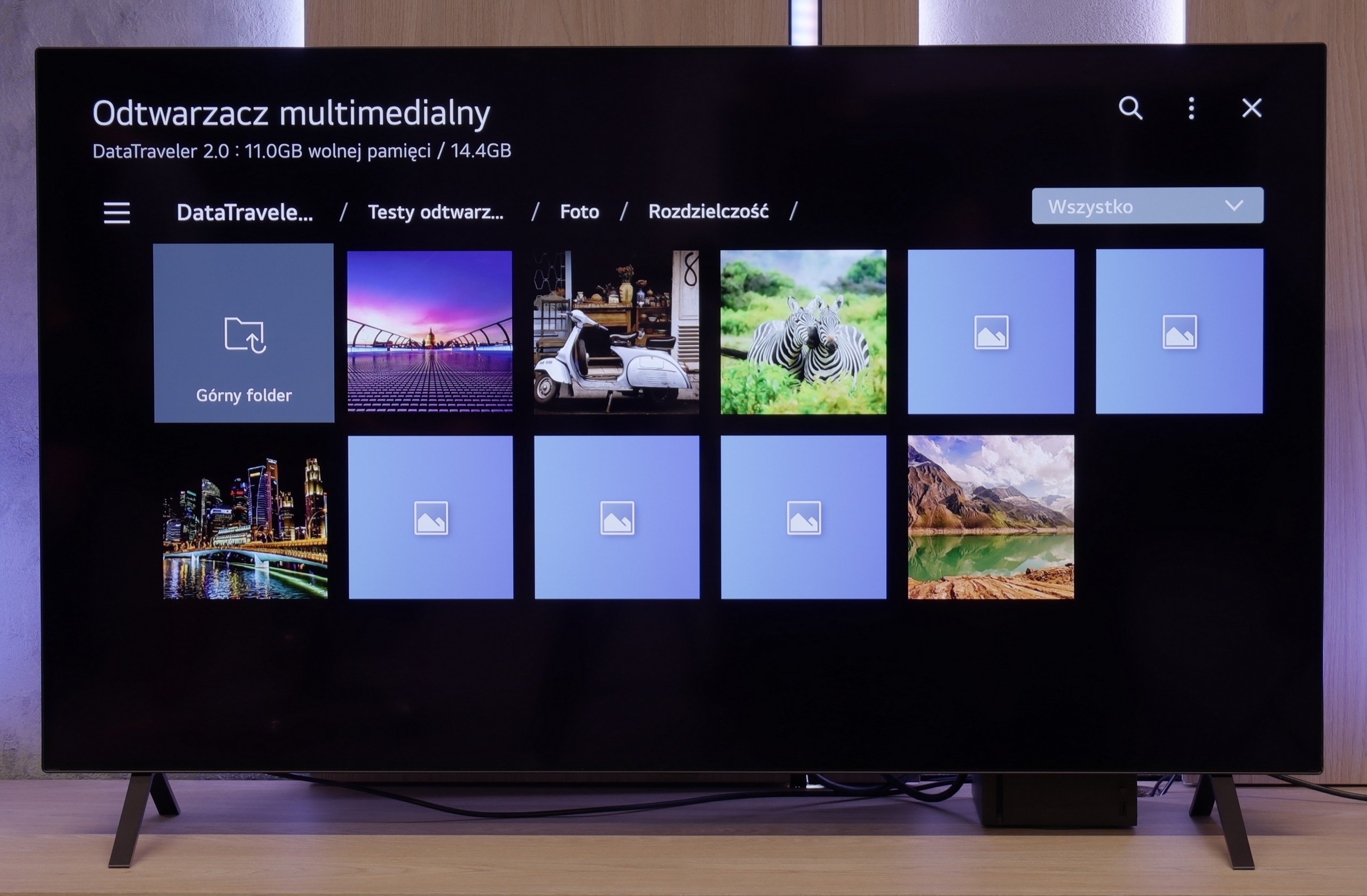
The default media player in Philips OLED 809 is of a fairly high standard, although it is not without its flaws. It performs excellently in playing various types of video files, except for two less popular ones. The presence of all checkboxes confirming playback of different subtitle formats deserves a big plus. The television handles every resolution of images, making it an excellent screen for viewing family albums or studio photos. The rest, including supported photo and audio formats, is satisfactory, and those that the television cannot play are either uncommon or becoming obsolete. Anyway, this is not a problem, as we can download a program from the app store that will resolve these issues.
LG B5 handles files from USB as it should. Most popular formats work flawlessly, and subtitles – even with Polish characters – are displayed correctly. You can easily play a movie from a USB stick or have a weekend slideshow of your holiday photos without worrying that something will go wrong. However, there was a surprise with HEIC format files – that is, photos saved by Apple devices. While the LG C5 had no issues with them, the B5 stubbornly refused to cooperate and was unable to display them. A minor hiccup that probably won't affect everyone, but it's worth knowing about.
Apps
9.6/10
8.7/10














































Sound
7.1/10
7/10
- Subjective sound quality:7.1/107/10
- Dolby Digital Plus 7.1:
- Dolby True HD 7.1:
- Dolby Atmos in Dolby Digital Plus (JOC):
- Dolby Atmos in Dolby True HD:
- DTS:X in DTS-HD MA:
- DTS-HD Master Audio:
At the outset of this paragraph, it should be noted that sound quality is always subjective. In our opinion, the audio system that the manufacturer has equipped the Philips OLED 809 with is of a fairly high standard. The bass is well-defined, but at the same time, it does not overshadow the mid and high tones. Looking at it from another angle, when opting for a television at this price point, we will likely already have a separate audio system. In this context, the tested television will certainly not disappoint, as it supports virtually every important standard, including Dolby Atmos and, more importantly, DTS-HD Master Audio.
We weren't expecting miracles – after all, the LG B5 doesn’t have an advanced audio system, and its built-in speakers look... well, like those in most flat-screen televisions. And yet – it sounded really pleasant. The dialogues are clear, the sound doesn’t boom, and during a calmer viewing, we didn’t immediately feel the need to connect a soundbar. It's a pity that this year LG decided to cut something that worked in the previous generation. We're of course talking about support for DTS formats, which we will no longer find in the B5. If you have films encoded in this format – you'll need to rely on an external player.


